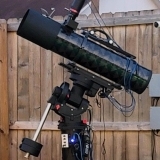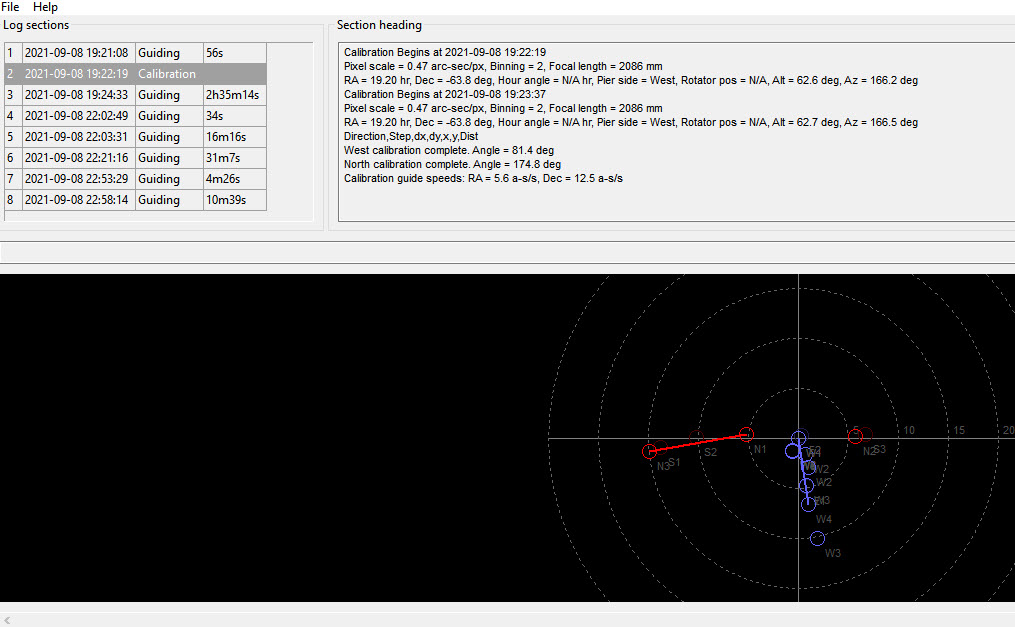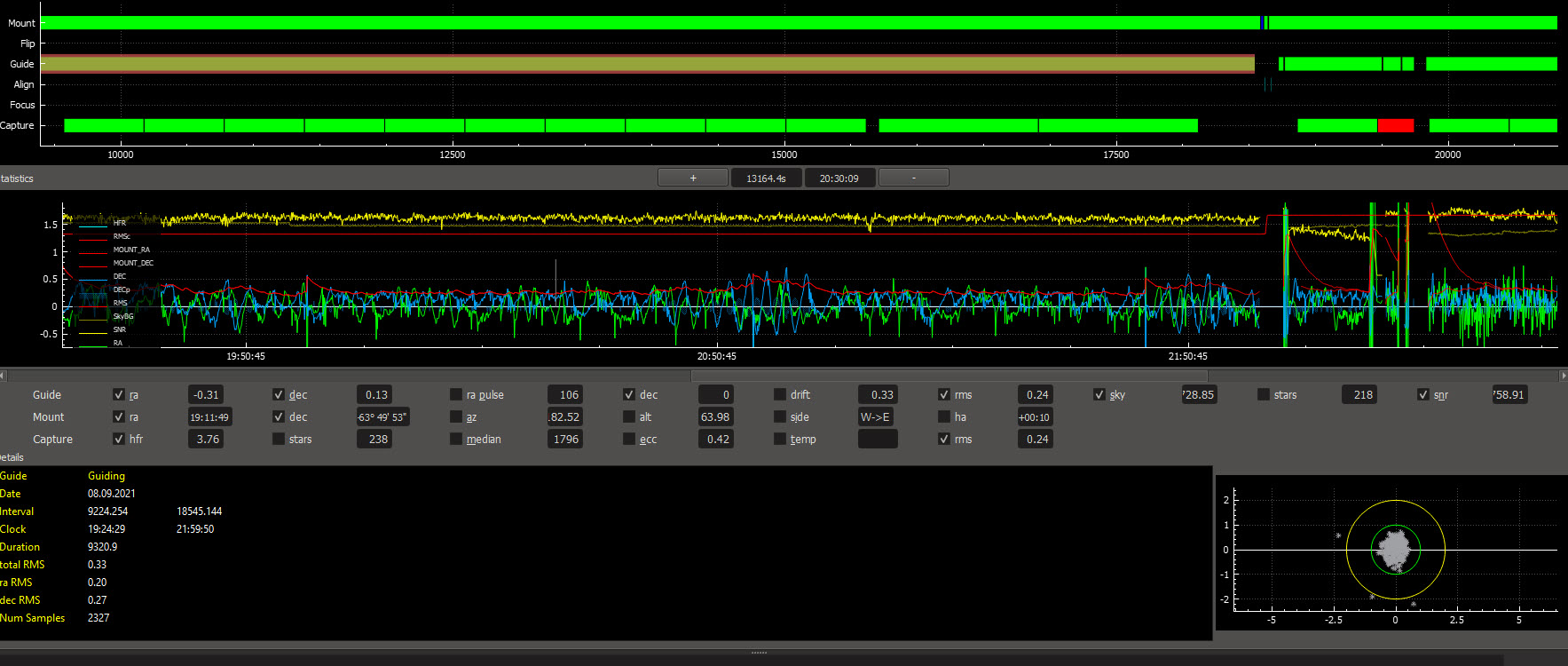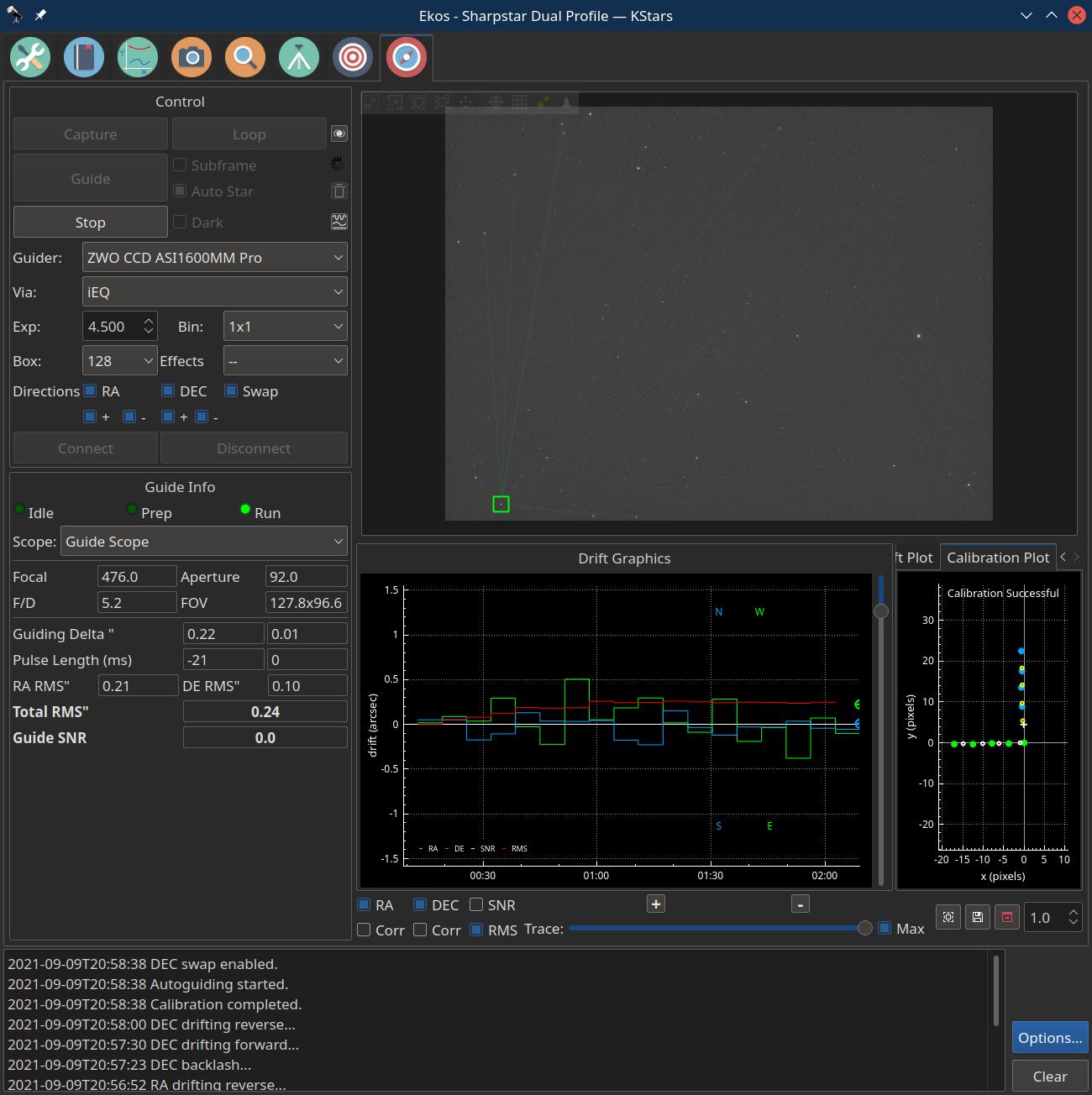INDI Library v2.0.7 is Released (01 Apr 2024)
Bi-monthly release with minor bug fixes and improvements
Internal Guider Changes--please read if you use it
- Clive Garner
-

- Offline
- New Member
-

- Posts: 19
- Thank you received: 3
Replied by Clive Garner on topic Internal Guider Changes--please read if you use it
Attachments:
Please Log in or Create an account to join the conversation.
- Clive Garner
-

- Offline
- New Member
-

- Posts: 19
- Thank you received: 3
Replied by Clive Garner on topic Internal Guider Changes--please read if you use it
Attachments:
Please Log in or Create an account to join the conversation.
- Hy Murveit
-
 Topic Author
Topic Author
- Offline
- Administrator
-

- Posts: 1222
- Thank you received: 565
Replied by Hy Murveit on topic Internal Guider Changes--please read if you use it
(b) I wouldn't touch a thing if you have 0.24 RMS with an NEQ6.
Hy
Please Log in or Create an account to join the conversation.
- Clive Garner
-

- Offline
- New Member
-

- Posts: 19
- Thank you received: 3
Replied by Clive Garner on topic Internal Guider Changes--please read if you use it
Ohh PS I only upped the agression after an earlier oscillation, which seemed to bring it down, but the session on pics show afterwards, but lost the sky to clouds.
Please Log in or Create an account to join the conversation.
- Peter Sütterlin
-

- Offline
- Supernova Explorer
-

- Posts: 1009
- Thank you received: 133
Replied by Peter Sütterlin on topic Internal Guider Changes--please read if you use it
Hy - is the calibration somewhere measuring/reporting backlash? I don't think it's aggressiveness. There are always multiple (many!) pulses before the drift is caught. Too high aggressiveness would be an immediate overshoot after the pulse. Either backlash, or too low speed from calibration..
Or a mismatch in pixel size?
Clive, is this the very latest build from Hy, with the binning correction?
Please Log in or Create an account to join the conversation.
- Clive Garner
-

- Offline
- New Member
-

- Posts: 19
- Thank you received: 3
Replied by Clive Garner on topic Internal Guider Changes--please read if you use it
Mount backlash is fairly tight, zero movement, with rowan kit too
2086 FL dirived from platesolve, so should be accurate
Please Log in or Create an account to join the conversation.
- Hy Murveit
-
 Topic Author
Topic Author
- Offline
- Administrator
-

- Posts: 1222
- Thank you received: 565
Replied by Hy Murveit on topic Internal Guider Changes--please read if you use it
Calibration never prints out the backlash, but it is measuring x,y points while it turns around DEC. One could see all those measurements in the log. What calculation exactly would you recommend? Do you need to turn DEC around many times?
Hy
Please Log in or Create an account to join the conversation.
- Hy Murveit
-
 Topic Author
Topic Author
- Offline
- Administrator
-

- Posts: 1222
- Thank you received: 565
Replied by Hy Murveit on topic Internal Guider Changes--please read if you use it
Please Log in or Create an account to join the conversation.
- Peter Sütterlin
-

- Offline
- Supernova Explorer
-

- Posts: 1009
- Thank you received: 133
Replied by Peter Sütterlin on topic Internal Guider Changes--please read if you use it
As for the guiding: I just compiled the latest git (which seems to be identical to your guider-fix13). I re-ran the guider calibration (equator near meridian), which gave me the (almost) exact same values I had before (angles within half a degree, speed 1.5ms/"). The attached image shows the EKOS tab. Guiding as usual
I calibrated at binning 1x1, then for a test switched to 2x2. No change in the arcsec display here, RMS around 0.25" , like with 1x1 binning.
Cheers,
Pit
Please Log in or Create an account to join the conversation.
- Sonny Cavazos
-

- Offline
- Elite Member
-

- Posts: 239
- Thank you received: 38
Replied by Sonny Cavazos on topic Internal Guider Changes--please read if you use it
Please Log in or Create an account to join the conversation.
Replied by Alfred on topic Internal Guider Changes--please read if you use it
1. Eliminate backlash (if there is any) before actual measurement: Do a step out. If movement is zero, do another step out. Continue until movement is detected. [In case there are steps with no movement, the user has chosen a too low "Pulse" value and the whole step happens "within backlash". Normally, the first step out should produce some movement. However we should ignore it as it could contain backlash.]
2. Start measuring "DEC out": Do X steps out, measure movement sum of steps out, then "DEC out" = "movement sum out"/X.
3. Eliminate backlash on the way in: Do a step in. Like in 1. repeat until there is movement detected. Remember a) "the number of "zero movement" steps and b) "the amount of movement with the last step" (the one that did cause movement).
4. Start measuring "DEC in": Do X steps in, measure movement sum of steps in, then "DEC in" = "movement sum in"/X. [Although in a perfect world the absolute values of "DEC out" and "DEC in" should be the same, in reality they are not. At least not in all cases. For instance the difference can stem from mechanical imperfections or bad balance.]
5. Now calculate DEC backlash: backlash = (a+1) * "DEC in" - b
The guider should make use of both values, "DEC out" and "DEC in", for their respective directions.
Please Log in or Create an account to join the conversation.
- Peter Sütterlin
-

- Offline
- Supernova Explorer
-

- Posts: 1009
- Thank you received: 133
Replied by Peter Sütterlin on topic Internal Guider Changes--please read if you use it
Would it make sense to specify the dither radius in arcsec, to make it independent of binning?
Please Log in or Create an account to join the conversation.



